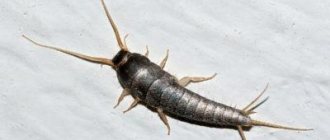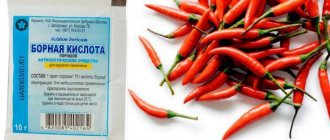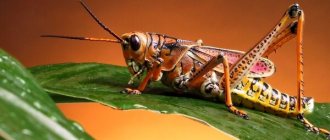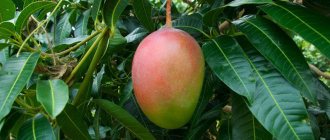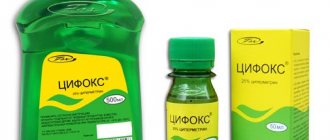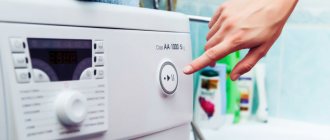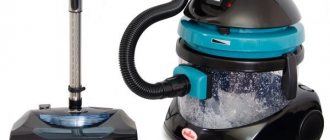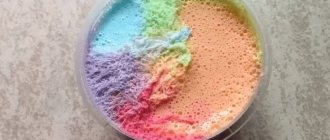How to get rid of woodlice
Most people, when asked: “Who are woodlice?”, without hesitation, will say that they are insects. But that's not true. Woodlice are arthropods from the order of isopod crustaceans. Unlike their distant relatives: crayfish, shrimp and lobsters, in the process of evolution they adapted to life on land. Woodlice can remain in the water for up to an hour, and some species still live on the bottom of the oceans.
Description
Woodlice are a suborder of crustaceans from the order Isopods.
The parasite has an oval-shaped body and it tapers at the end. On the back of woodlice there is a shell consisting of movable plates. It has fourteen legs, which makes it move quickly. The body is gray with a brown tint. The body of adult woodlice reaches two centimeters. Woodlice have four antennae, two of which grow up to one centimeter. No claws.
Classification
They belong to the animal kingdom, to the phylum arthropods, to the class higher crayfish, to the order Isopods, to the suborder woodlice. The classification of insects is described in more detail in a separate article.
Characteristics of crustaceans
Several species of crustaceans live in temperate climates. You can find a description and classification of woodlice here, and read about white woodlice in this material.
Common armadillo
The common armadillo (Armadillidium vulgare) is a very famous and common species of woodlice. The land species, the order of isopods, has been well studied.
It has an oblong dense body, divided into segments and seven pairs of legs. A head with a pair of eyes on the sides and four antennae. Two antennae are long, the other two are shorter. Reach a length of 10-12 mm . The color gray is sometimes closer to black, but there are also very light ones.
Woodlice are generally not dangerous to humans and their homes (read about the dangers and methods of controlling woodlice here). They do more harm to vegetation because they eat it. It is believed that these crustaceans can carry viruses and bacteria, but this has not been proven.
Centipede
The second name is flycatcher. Does not apply to insects. It is an arthropod from the family of centipedes, a subphylum of tracheae. Found in dark, moisture-saturated places .
The flycatcher has a flat body. It is divided into segments, there are 15 of them. Each segment has a pair of legs. The front pair are jaws and are used for catching prey. In most cases the body color is gray with red, brown or pink. But there are also yellow ones.
Centipedes do not damage furniture, wallpaper, and do not transmit various diseases and viruses. The centipede is predominantly nocturnal. It feeds on flies and cockroaches.
After a bite, if weakness, dizziness, breathing problems and other reactions occur, you should urgently call an ambulance or consult a doctor.
We invite you to watch a useful video about centipedes:
Silverfish
Scientific name: Lepisma saccharina. Small insect, bristletail order. Lives in residential premises and food warehouses . Presumably one of the oldest insects still living today.
The silverfish has an oblong body, 0.8 to 1.9 cm long, with a large number of legs for rapid movement. When reaching puberty, the individual is completely covered with small scales. Eats small insects and ticks harmful to humans.
Silverfish does not pose a threat to human life and health and does not carry infections. Unpleasant only for its appearance. But thanks to its gastronomic preferences in food, it can cause harm, since it feeds on foods that contain starch and polysaccharides. The food goes to:
We invite you to watch a useful video about silverfish:
Double-tailed
An arthropod with a small body size, belonging to the order of cryptomaxillary six-legged insects.
The insect is 5 mm long, some species reach 50 mm. The two-tailed fish has no eyes ; it uses long antennae, which are very sensitive, to navigate in space. At the back there is a cercus - a growth in the form of claws or forceps, which is used as protection and for holding prey. If necessary, the two-tailed fish can get rid of them, but then the claws grow back. It has a red-brown color.
Is double-tailed dangerous? This question comes up often. Insects damage indoor plants, vegetables, fruits and berries in the garden. When two-tailed insects appear in the house, there is a risk of being bitten and infected. The bite is very painful; large two-tailed ones can easily damage the skin and leave a mark in the form of two wounds. The sores may be very itchy, red and swollen.
Two-tailed fish are not poisonous, but their bite requires treatment with disinfectants and antibacterial substances. If an allergic reaction occurs, immediately call an ambulance or consult a doctor.
Transparent
Transparent (white) wood lice are the same silverfish . This is what they become after they have shed three times. Respiration is carried out using gills. They reproduce quite quickly. Clutches of one hundred eggs, from which an independent insect emerges almost a month later.
It leads the same lifestyle, eats and causes harm in the same way as the silverfish. Safe for humans.
Marine
The giant sea lice (isopod) is a deep-sea marine inhabitant from the order of decapods. They reach a length of 15 to 40 cm, but there have also been specimens of more impressive sizes. They live in the Atlantic, Pacific, and Indian oceans at depths from 170 to 2000 m. They lead a solitary lifestyle . Feed:
Outwardly they resemble ordinary land woodlice, but there are differences:
They are not dangerous to humans, but in case of danger to themselves, they curl up, forming a ball protected by hard shell shields.
More details about the types of woodlice and their description can be found in this material.
We invite you to watch a useful video about sea woodlice (isopods):
In the basic definition
, woodlice are not classified as pests .
By their appearance, they signal high humidity or a possible problem with the sewerage or water supply. To get rid of them in your home, it is not necessary to immediately use poison; sometimes reducing the humidity is enough. This negatively affects the comfort of woodlice and they may leave their habitat. It is important to remember that woodlice take part in the fight against other pests.
If you find an error, please select a piece of text and press Ctrl+Enter.
Source
Kinds
Today there are about four and a half thousand species of these creatures in the world. They are able to exist in any environmental conditions. Pests live in all climatic regions of the planet. In Russia there are only a couple dozen of these representatives. And only two species live in communal apartments: the common armadillo woodlice and the rough woodlice.
The white woodlouse lives in damp forest floors in the forests of Central America. White woodlice is native to South America. Very small, from five to six millimeters. Has a white color. It feeds exclusively on plants, or, to be more precise, their remains. She is called the terrarium orderly, as she feeds on leftover food, as well as other waste products of tarantula spiders.
Insect at home and in nature
Common woodlice most often crawls out of dark and damp corners of your home, for example: the bathroom or toilet. Small size. It has a gray tint and an oval abdomen.
REFERENCE! Woodlice is not always a parasite, since in the wild it eats decaying plant remains and participates in soil formation, but it can harm delicate plants, for example, it can eat strawberries. It is eaten by many animals. Sometimes it is specially bred and fed to reptiles and spiders living in the house.
The role of woodlice in nature and human activity
It’s worth noting right away that the beneficial effects of woodlice far outweigh any damage they can do. However, these creatures have a bad undeserved reputation as pests, mainly because they wander around the apartment mainly at night, usually in order to avoid overwatering in the presence of high humidity, or vice versa - in search of water to replenish her body's reserves.
Woodlice can spread over considerable distances during these nocturnal wanderings. Therefore, representatives from the damp basement of the house can be found in the bedroom of an apartment on the seventh floor.
In the garden, woodlice rarely attack living plants, preferring to eat vegetation that has begun to decompose. However, in greenhouses they can sometimes chew seedlings, but this rarely causes any significant economic damage. In the forest floor of deciduous forests, as well as on compost heaps, woodlice play a vital role. They chew dead plants into small fragments and deposit them as fecal pellets, which quickly decompose. In addition, woodlice can also feed on fungal spores on plant leaves, which prevents the development of many plant diseases.
The deposition of fecal granules containing fungal spores in the deep moist layer of fallen leaves may be important in stimulating putrefactive decomposition in forest humus layers and the formation of fertile soil mass. Thus, the activity of woodlice accelerates the process of decomposition of organic matter and helps return essential nutrients to the soil.
Stages of creature development
After some time, larvae emerge from woodlice eggs, but even after the larvae are born, they still live for some time in the so-called “brood chamber.” There they grow and develop for about forty or fifty days. The main difference between larvae and adult representatives of this class is that they have only twelve legs, while adults have fourteen. Before the adult stage, the larvae molt up to ten times. All these molting processes for woodlice larvae take approximately three months.
Who is Woodlice?
Quite a few species of woodlice have been found in nature today, and most of them live in an aquatic environment, as is typical for most crustaceans. About 250 species of woodlice were able to adapt to life on land in the process of evolution, however, for the normal flow of all biological processes, these creatures still need a large amount of moisture. It is for this reason that woodlice appear only where there is high humidity, and for this reason they deserve their name.
The species of woodlice that we are accustomed to meeting on our life’s journey has also adapted to this “land” category - Porcellio scaber, which is also called the woodlice.
Traditionally, woodlice were considered as poorly adapted living organisms to life on land. However, research in recent years has shown that these creatures have evolved several complex physiological and behavioral mechanisms to control water loss. These include the formation of the lungs and capillary conduction system, which allows nitrogenous waste products from the body, such as ammonia gas, to leave the body without significant loss of water.
Despite their weakness for water, woodlice have colonized some of the most extreme environments on earth, including deserts in Israel and North Africa, and hypersaline pools in Australia.
Features of the internal and external structure
On the head of the woodlice there are 2 antennas and eyes, which are located at the edges of the head. The exoskeleton is formed from the segments. He saves this creature from the adverse effects of the environment. No waxy cuticle. The respiratory organs are located under the paired plates.
They are internal plates - a respiratory organ or a type of gill, which is completely permeated with blood vessels. It is located under the abdominal legs, the plates hold moisture around the gills. The woodlice has seven pairs of legs, unlike its “relatives.”
Photo
Below you can see what a woodlice is and what these insects look like:
How does it reproduce?
When the crustaceans reach normal conditions for procreation, and this happens mainly in April and May, they lay eggs. This process mainly takes place at night.
- When a male meets a sensitive female, he climbs onto her back and “drums” on her with his front paws and at the same time “licks” her head with his mouthparts.
- During movement, the male does not leave the female, transferring his seed to one of several genital openings of the female.
- Then he moves to the other side and continues the process into the other genital opening.
- During the breeding season, reproductive females create what is called a "brood pouch", somewhat similar to a cockroach's brood pouch, consisting of overlapping leaf-like structures known as "ostegites". Fertilized eggs pass into this fluid-filled chamber, and after hatching, the young crawl out of the brood pouch when fully developed.
What does it eat?
These creatures love to enjoy a variety of delicacies for them. They prefer to eat rot and already dead plants, but can also eat living ones.
REFERENCE! In addition, they prefer leaves or other organic remains. Also, do not neglect to eat dust and mucus on the walls.
Read about what woodlice eat here.
Interesting Facts
- In dry and hot environments, woodlice will increase movement. If you place it in the opposite environment, the effect will be the opposite.
- During the night, woodlice can rise to the height of the seventh floor.
- Ambient temperature affects the body color of these animals.
- In woodlice, the back part of the body molts earlier than the front part. Because of this, it feels like it consists of two parts.
- In California, in some areas, there are ten thousand individuals per square meter.
- If a male woodlice is infected with bacteria, it changes sex.
- Woodlice have blue blood.
- Several species have a non-uniform color and have unusual patterns that are similar to hieroglyphs.
Why do they start in the apartment?
Woodlice appear in dark, warm and damp places in the house. There are also several other reasons for the appearance of these creatures at home, for example:
- Wet laundry.
- House plants.
- Garbage.
- Old books.
- Dirt.
The following may appear:
- under the bath;
- behind the toilet;
- under the sink;
- between piles of laundry;
- in the pantry;
- in potted plants.
Spread of woodlice
Woodlice can be found in a wide range of habitats, almost anywhere. The most productive areas in terms of their numbers are those that are primarily provided with sufficient moisture and are also protected from direct exposure to sunlight. These are numerous damp crevices, areas on the ground covered with something, a pile of rotting leaves, and others. In addition, damp leaf litter, rotting wood, loose bark, piles of stones in abandoned quarries, and ordinary household garbage are the best places to find these living creatures. Woodlice lead a more active lifestyle at night.
Instructions for disposal
IMPORTANT! When fighting pests, try to get rid of the factors causing them: moisture, garbage, etc.
Folk remedies
There are many ways to get rid of woodlice at home:
- Take 2 parts of dry kvass and 1 part of boiling water. Dilute the solution to be sprayed in the area where pests are concentrated.
- Mix 1 liter of water, 3 grams of red pepper, 3 grams of tobacco and 3 grams of ash salt. Spray the solution in all corners of the apartment. After eight hours, treat the bathroom with chlorinated water.
- Make a solution of one liter of water and 40 grams of bleach. Treat the area where wood lice accumulate with this solution, not forgetting the safety rules, and remove pets.
- Sprinkle table salt in the corners of the bathroom.
- A solution of boric acid also helps a lot, as it destroys the insect's shell; without it, they die very quickly.
- A wet rag or birch broom will serve as a trap, which will contain many parasites in the morning. They need to be shaken into a large container and doused with boiling water.
Chemicals
If traditional methods are ineffective, you should try chemicals:
- Tarax powder has a good effect. Universal for all insects. The solution is used to treat pipes, baseboards, ventilation shafts and other places where pests accumulate using a brush or syringe. When exposed to the active substance, the parasites die, which also infect other individuals.
- The German gel bait “Schabengel” is also universal.
- Dichlorvos spray “Varan”, “Tetrix”.
- Lures "Mole" and "Gett".
For soil: insecticides “Grom”, “Aktara”, “Ideal”.
ATTENTION! When using any drug, you must strictly follow the dosage instructions to avoid harm to nature.
Watch a video about how to deal with woodlice:
Where do they come from?
Indoors, woodlice settle and breed in places where there is little light and a lot of dampness. The bathroom, toilet, and the area under the kitchen sink where condensation accumulates are the most likely places for it to spread. You can find small crustaceans in pots with indoor plants, in a chest of drawers if the housewife has a habit of not drying clothes well, in the pantry, among damp paper boxes, even on a bookshelf if the books are stored in high humidity.
Most often they sneak into apartments and houses in the fall. If they find dampness and warmth, they will stay and reproduce. A microclimate suitable for wood lice develops due to poor operation of the ventilation system, due to malfunction of water pipes and plumbing fixtures. If you want to get rid of them and prevent them from appearing and multiplying, pay due attention to the condition of the pipes and plumbing.
Particularly dangerous are individuals who “came” from the street along with dirty shoes and leaves. They have good adaptability to new living conditions and reproduce quickly. Getting rid of such a colony is problematic.
Woodlice larvae can be brought in with library books, with postal parcels, with items purchased at spontaneous markets and damp warehouses.
In private homes, pests can be found in attics, cellars and basements, in greenhouses, from where they freely crawl into living spaces.
Prevention of recurrence
- The house should be dry and clean.
- Keep an eye on plumbing and cracks in the house.
- Remove excess water after showering.
- Wash clothes.
- Do not leave laundry after washing, carefully remove any remaining water from the room.
- In the bathroom, it is not advisable to dry freshly washed clothes or purchase a dehumidifier.
- Do not leave dirty dishes in the kitchen.
Various species of woodlice have adapted to different environmental conditions , and a semi-rigid shell helps them in this. To prevent these creatures from appearing in your home, you should follow a number of the above methods to avoid the appearance of woodlice, since it is better to follow these rules than to later fight with these domestic parasites.
Behavior
The development of woodlice is not sufficient for them to be accused of consciously seeking favorable conditions, so their movements are determined by reflexes. In an attempt to find a place where the body will lose a minimum of moisture, the woodlice can change the speed of movement and turning.
You can conduct an experiment: put the woodlice in a dry or even hot place and observe it. She will move faster, spin more actively, looking for a way to escape from the negative environment. When placed in a dark, damp and cool place, the insect moves slowly, sometimes freezing for a long time.
